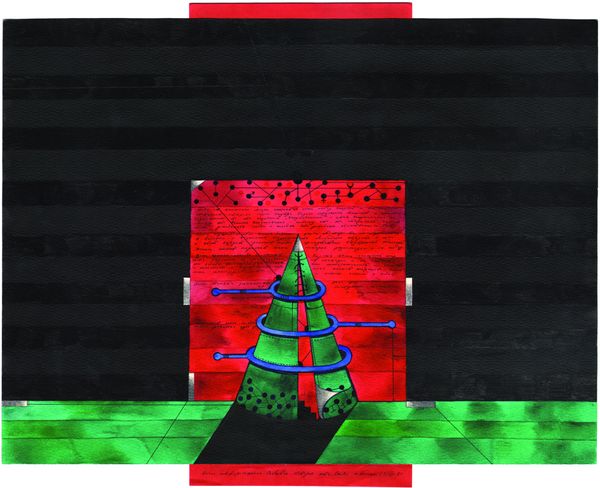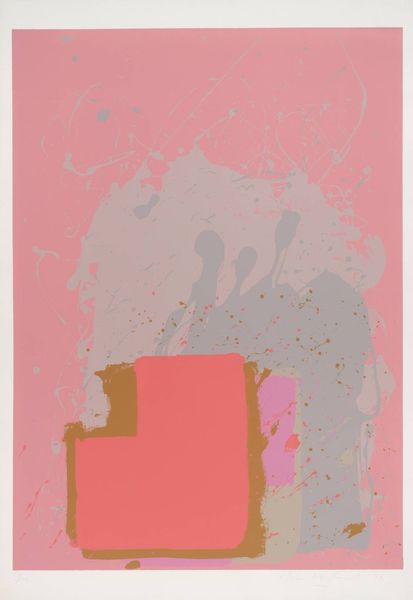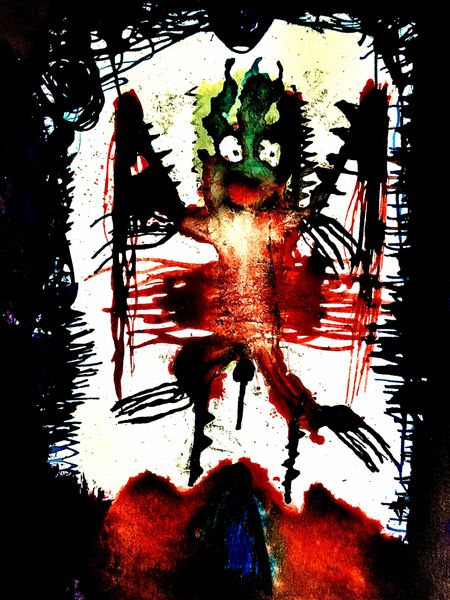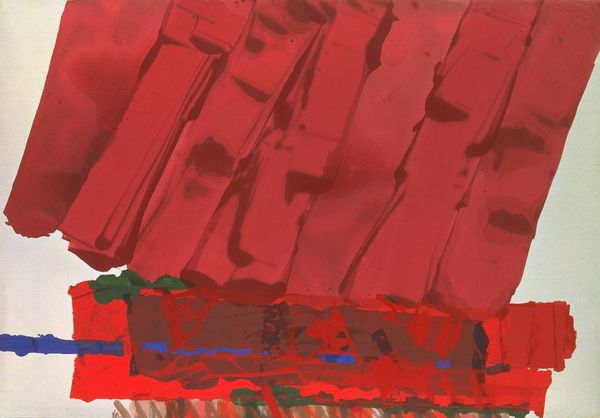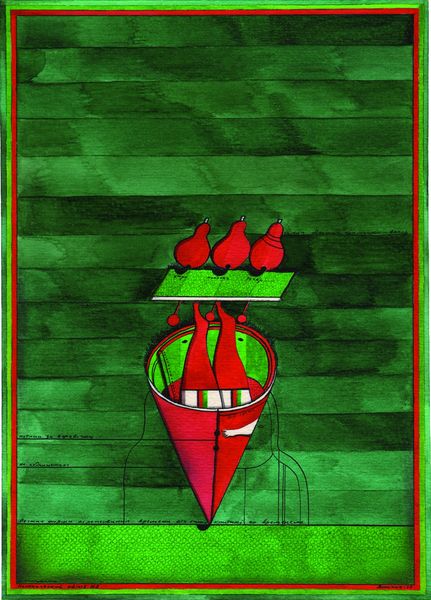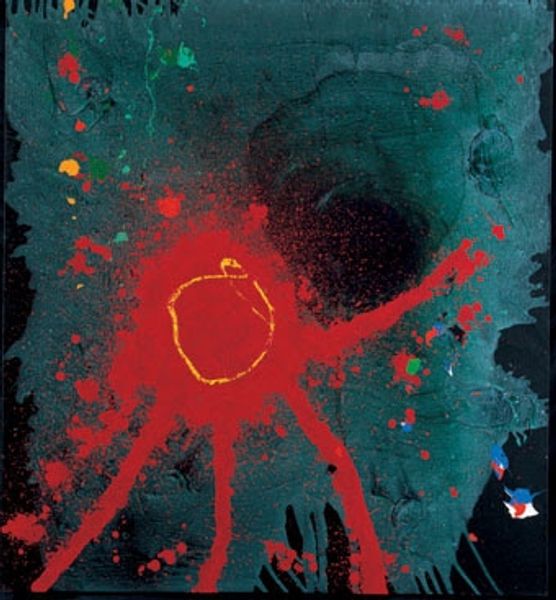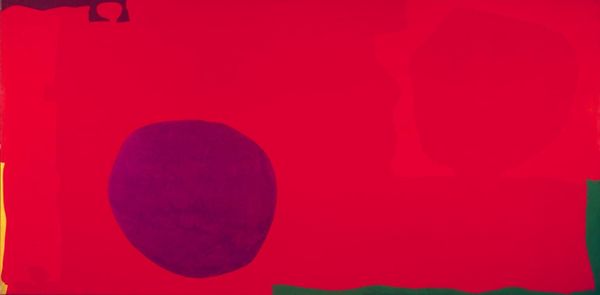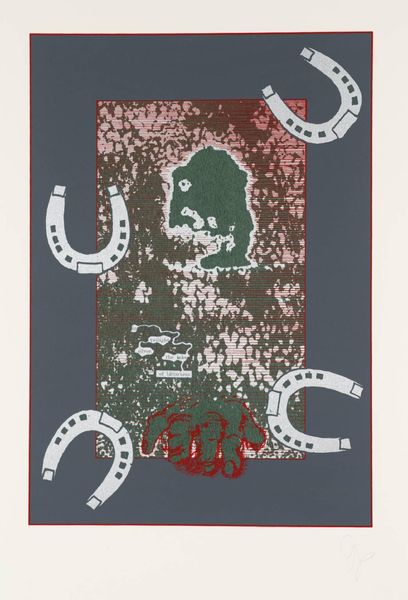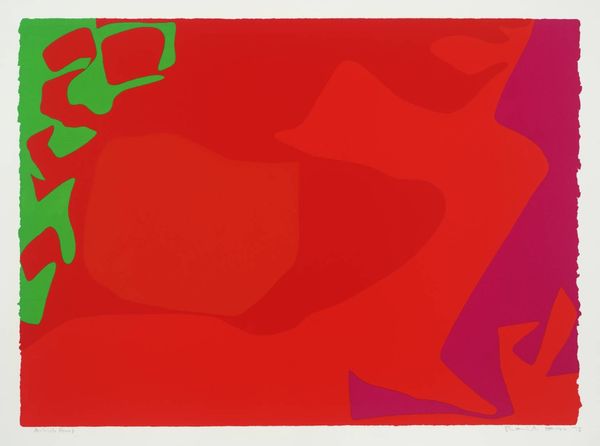
painting, acrylic-paint
#
painting
#
acrylic-paint
#
figuration
#
geometric
#
abstraction
#
modernism
Copyright: Oleksandr Aksinin,Fair Use
Curator: Oleksandr Aksinin’s acrylic painting, "Trinity," created in 1978, presents an intriguing composition. Editor: Striking. The crimson figures, seemingly contained within geometric forms, sharply contrast with the nebulous green background, creating a disquieting mood. Curator: Yes, the artist's style embraces elements of both figuration and abstraction. Note the stark geometry juxtaposed against those softer, more biomorphic forms. The piece almost operates as a visual paradox. The shapes, like the boxy red forms and the pipe-like extensions, give a concrete, architectural feeling. Yet the green feels limitless, ethereal. Editor: Indeed. And that intense redness dominating the composition. Its association with blood or passion. It makes you consider how Aksinin, working in Soviet Ukraine, might have felt about freedom and the limits put on the body within certain institutional configurations. Do you find that the visual balance—the red against the green—speaks to a dichotomy between the individual and state power during the late Soviet era? Curator: An astute reading! I'd say the composition reflects more than just a binary. The trinity reference suggests another interpretive level entirely. The relationship between the forms—are they interconnected, distinct, or perhaps even in conflict? It speaks to complex relationships within power structures. And I’d call attention to Aksinin’s choice of the acrylic medium here: acrylic lends itself to sharp lines. It can deliver a certain kind of emotional impact, and here the sharpness further punctuates a tension, if not discordance. Editor: Considering that discordance alongside the formal choices – that bright color set against softer fields and then trapped inside tight parameters – Aksinin really makes a strong case for the expressive power of the geometrically bound figure. It gives us some tools to analyze our own world, which also uses lines and geometry to manage feelings of liberation and constraint. Curator: Absolutely. The work resists easy interpretation, allowing for multiple layers of symbolic meaning, and the formal structure definitely propels these symbolic narratives. Editor: Yes, I leave this painting seeing the way historical context shapes our perception of abstract form, giving what might appear flat more weight and significance.
Comments
No comments
Be the first to comment and join the conversation on the ultimate creative platform.

